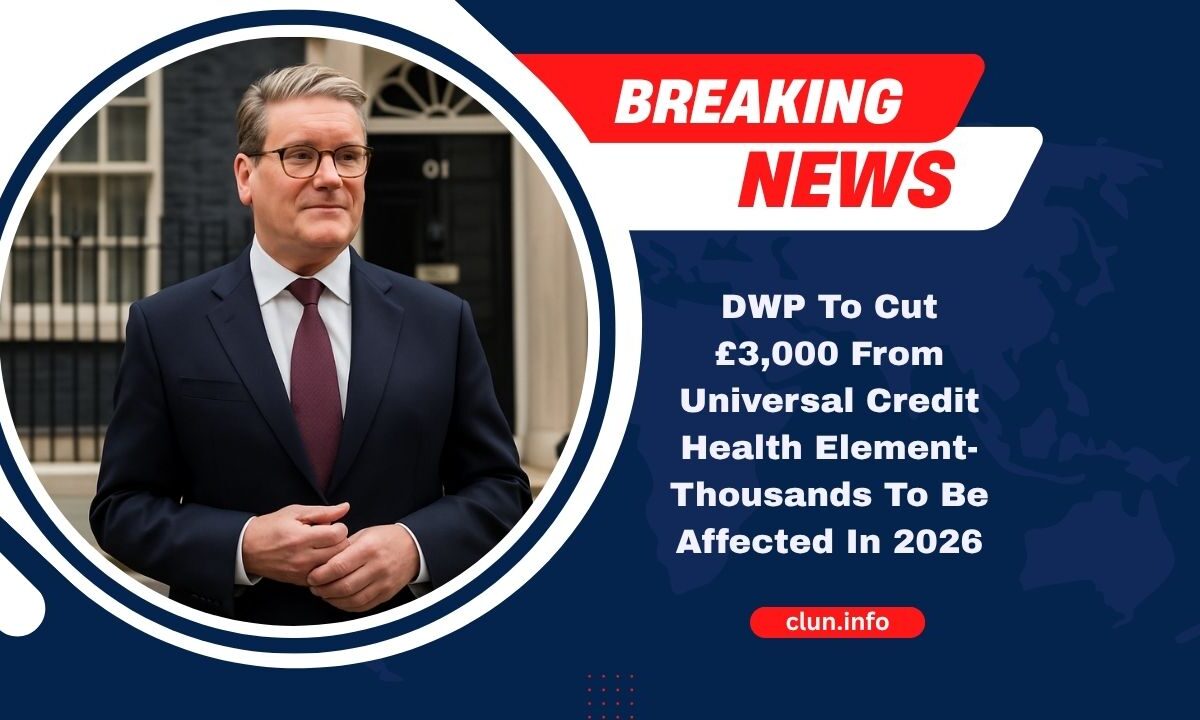The Department for Work and Pensions (DWP) is set to implement a significant cut to the Universal Credit health element, which will affect millions of claimants in the coming years.
This move will impact both current and future claimants, with some facing a loss of up to £3,000 per year.
Here’s what you need to know about this change, including who will be affected and the government’s justification for these cuts.
DWP’s Plan to Slash Universal Credit Health Element
In a bid to rebalance Universal Credit support, the DWP has proposed a reduction in the health element, which supports those with limited capability for work or work-related activity.
The plan involves freezing the current health element rate at £97 a week for existing claimants until the year 2029/30 and implementing a reduced amount of £50 per week for new claimants starting from 2026/27.
This change will significantly impact the 2.25 million existing recipients of the health element, with an average loss of £500 per year.
However, those who will be impacted the most are the 730,000 new claimants expected to join the system starting in April 2026.
These new claimants will face a £3,000 annual loss, which will be partially offset by an increase in the standard allowance.
Why Is the DWP Making These Changes?
The decision to reduce the health element comes as part of a broader welfare reform plan proposed by the Labour Party government.
The intention behind this reform is to create a more balanced and sustainable system that better supports those who need help getting into work, while also ensuring the system is efficient for taxpayers.
Labour leader Sir Keir Starmer has been vocal about the need for welfare reform, stating that the current system does not adequately help people who need support getting back to work.
He added that those who are unable to work due to lifelong conditions should still receive proper support, without the stress of constant reassessments.
What Does This Mean for Existing and Future Claimants?
For existing claimants who currently receive the health element of £97 per week, the freeze will result in an annual loss of £500.
While this may not seem like a drastic amount, for many individuals living on a fixed income, it can create significant hardship.
For new claimants starting in 2026, the impact is much more severe. With the reduced health element of just £50 per week, these claimants are set to lose an average of £3,000 annually.
This is a substantial cut, especially for individuals with severe health conditions who may not be able to work.
Will the Loss Be Offset?
While the loss in the health element is considerable, the DWP has proposed an increase to the standard allowance, which is the basic amount provided to all Universal Credit claimants. This increase is intended to help soften the blow of the cuts to the health element.
However, the increase in the standard allowance is not expected to fully compensate for the significant reduction in the health element, especially for those with the most severe and long-term health conditions.
Impact of the Changes on Vulnerable Individuals
The changes to the health element are expected to hit the most vulnerable individuals the hardest. People who have life-long conditions and have no prospect of returning to work will receive an additional premium to help protect their incomes.
This premium will ensure that those who are most at risk of poverty and hardship will receive the support they need.
2.25 million existing recipients of the health element will be affected by the freeze, while 730,000 new claimants will see a major reduction in their support. This could lead to increased financial strain for those already struggling to make ends meet.
Universal Credit Health Element Changes
| Category | Current Rate | Proposed Rate (2026) | Loss Per Year |
|---|---|---|---|
| Existing Claimants | £97/week | £97/week (Frozen) | £500/year |
| New Claimants (from 2026) | £97/week | £50/week | £3,000/year |
The upcoming cuts to the Universal Credit health element will result in thousands of people losing significant financial support.
While the increase in the standard allowance may help offset some of the losses, the reduction in support for people with health conditions is a worrying development.
Claimants with severe and life-long conditions will be protected through an additional premium, but many will still face financial difficulties.
As the reform process continues, it remains to be seen how these changes will impact the most vulnerable in society.
FAQs
Who will be affected by the Universal Credit health element cuts?
Existing claimants will experience an average loss of £500 annually, while new claimants from April 2026 will lose around £3,000 per year.
What is the government’s reasoning behind reducing the health element?
The government is aiming to rebalance support, increasing the standard allowance for all claimants while reducing the health element to better serve those in need of support to return to work.
Will the loss in health element be offset by the standard allowance increase?
While the standard allowance increase may offer some relief, it will not completely offset the £3,000 loss for new claimants, especially those with severe, long-term conditions.




